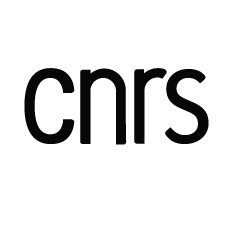Hybrid materials
Team leader: Dr Sylvain Duval
Associate team leader : Pr Christophe Volkringer
Words from the team leader
Created in September 2017, the hybrid materials team (MATHYB) is composed of five permanent researchers, and is developing research on the synthesis of organic-inorganic hybrid solids. These solids include coordination polymers such as Metal-Organic Frameworks (MOFs), molecular species such as oxo-metallic clusters or metal-organic cages (MOCs). We rely on our expertise in coordination chemistry to create new “tailor-made” materials (multifunctional, controlled porosity) that can respond to current societal issues regarding energy transition, resource preservation, environmental protection and biological decontamination. In particular, the objective of this research thematic is to propose innovative solutions for gas adsorption, catalysis, depollution and antiviral protection.
Sylvain Duval, Associate Professor
Research themes
![[Translate to English:] Image systèmes moléculaires](/fileadmin/user_upload/laboratoires/uccs/Recherche/Chimie_du_solide/Mathyb/Mathyb_1.png)
Molecular systems
This research concerns the development of a new crystal chemistry for the synthesis of molecular building blocks based on transition metals (type V) such as niobium (IV, V) and tantalum (V). The identified units of variable nuclearities ({Nb}2-12 and {Ta}2-8), stabilized by carboxylate ligands, could subsequently be used as building blocks for the development of original extended networks of the MOF type with the properties inherent to this type of compounds.
Metal-Organic cages
![[Translate to English:] Image Cages métallo-organiques](/fileadmin/user_upload/laboratoires/uccs/Recherche/Chimie_du_solide/Mathyb/Mathyb_2.png)
A recent theme of the group focuses on the control of the structure-property relationship of metal-organic molecular cages (MOCs) via their pre- or post-synthesis functionalization. These molecules offer new possibilities in terms of shaping, thanks to their solubility, but also for obtaining supramolecular assemblies for the formation of complex structures. Because these metal-organic cages are build from similar precursors than MOFs they retain all the same properties (catalytic, porosity) allowing them to be used for the team's strong themes.
MOF materials for gas molecules adsorbent
![[Translate to English:] Image MOF](/fileadmin/user_upload/laboratoires/uccs/Recherche/Chimie_du_solide/Mathyb/Mathyb_3.png)
This research direction constitutes a historical theme of the research group, and concerns the problem of the release of gaseous effluents into the environment, which can be encountered during a nuclear reactor accident. We have thus explored the capabilities of capturing gaseous radioactive contaminants such as molecular iodine (I2) and more recently ruthenium tetroxide (RuO4), krypton or xenon using MOF materials. The team has set up an adsorption bench for gaseous iodine (I2) with an automated kinetic measurement system, or adsorption measurements of krypton or xenon controlled by thermostat.
MOF materials for the capture and degradation of chemical warfare agents
![[Translate to English:] Image MOF 2](/fileadmin/user_upload/laboratoires/uccs/Recherche/Chimie_du_solide/Mathyb/Mathyb_4.png)
The team is interested in the properties of MOF materials for the adsorption and decomposition of DMNP (dimethyl 4-nitrophenyl phosphate) type molecules classically used as simulant of organophosphate nerve warfare agents. The research angle is centered on the functionalization of textile fabrics (combat suit) using MOF solids, which will allow toxic gases to be trapped and degraded. This activity addresses the aspect of grafting MOFs onto textile fibers, as well as capturing and measuring the kinetics of chemical degradation of DMNP molecules on fiber/MOF composites.
![[Translate to English:] Image matériaux poreux](/fileadmin/user_upload/laboratoires/uccs/Recherche/Chimie_du_solide/Mathyb/Mathyb_5.png)
Antiviral porous materials
Following the SARS-CoV-2 epidemic (2019), the team used its skills to manufacture porous antiviral materials. This work, carried out in collaboration with the Pasteur Institute in Lille, notably made it possible to offer MOF materials and porous silicas showing antiviral activity against the hepatitis C virus or several coronaviruses (including SARS-CoV-2).
Specific equipment
The team has a laboratory for the synthesis of materials at temperatures below 200°C (hydro-solvothermal, microwave, thermostatic oven – 10°C + 200°C) with the possibility of working under an inert atmosphere (vacuum-argon ramp, glove box) and a laboratory for measuring multi-gas adsorption isotherms (N2, CO2, CH4, Kr, Xe, NO, NH3, H2).
Team members
| Name | Function | Employer |
|---|---|---|
| Sylvain Duval | Assistant Professor | Univ. Lille |
| Natacha Henry | Assistant Professor | Univ. Lille |
| Alexandre Legrand | CNRS Researcher | CNRS |
| Thierry Loiseau | CNRS Research Director | CNRS |
| Christophe Volkringer | Professor | Centrale Lille |

